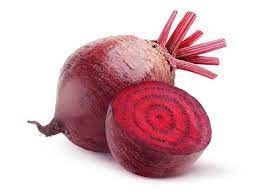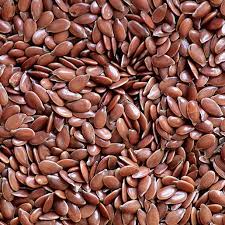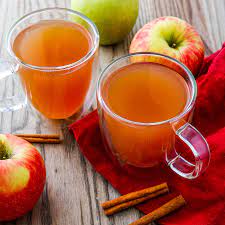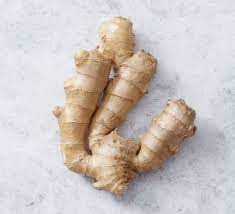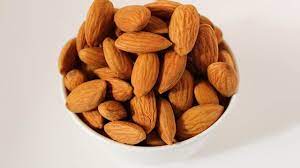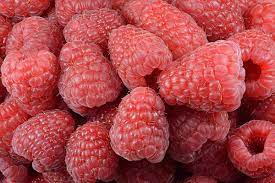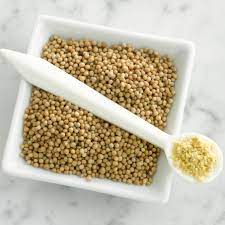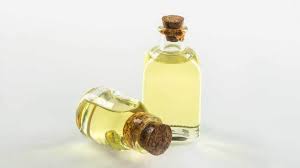Author Archives: Dr. Vaidya Karanvir Singh
Hypertension
- August 19, 2019
- Posted by Dr. Vaidya Karanvir Singh
- 0 Comment(s)

The common signs & symptoms faced by hypertension patients are fatigue, severe headache, chest pain, difficulty in breathing, vision problems, irregular heartbeat, blood in the urine, etc. Generally, hypertension is divided into two types primary & secondary. Primary hypertension is seen in most of the adults that gradually develop over many years. Secondary hypertension may develop due to kidney problems, obstructive sleep apnea, thyroid problems, adrenal gland tumors, certain medications like cold remedies, birth control pills, decongestants, overuse of pain killers, etc. People use to take allopathic medicines for hypertension but prolonged use causes side-effects on the body. Natural & home remedies are the best way to manage hypertension at home. So always use these instead of medicines:
Premature Ejaculation
- August 17, 2019
- Posted by Dr. Vaidya Karanvir Singh
- 0 Comment(s)

There are many ways in allopathy to control this condition, but later on they give many of the side effects which cause many other issues. We recommended some of the best home remedies that are free from any side effects and are easy to use.
1. Garlic
Garlic has aphrodisiac properties and it can aid you in elongating the duration of your intercourse without ejaculating prematurely. Cloves of garlic show anti-bacterial and anti-inflammatory properties that improve blood circulation in your body and also heat it to enhance copulation.
How to use
- You can chew the cloves or fry them in ghee and then eat them every morning, on an empty stomach.
2. Green Onions
Seeds of green onions are aphrodisiac and are very helpful in decreasing premature ejaculation in men. Seeds of green onion can increase a person’s stamina and strength, thus allowing him to prolong his sexual capacity.
How to use
- To use this remedy, just crush the seeds and mix them with water. Drink this remedy 3 times a day before your meal for about 1 month.
3. Ginger and Honey
Eating ginger increase blood circulation in our body and it specifically increases blood flow to the penile muscles. This gives men greater control to ejaculate and it is very helpful in retaining the erection as it heats the body, causing faster blood flow. Honey is considered as an aphrodisiac of strength and this can enhance the potency of ginger.
How to use
- The best way to consume this remedy is to mix half a teaspoon of ginger with honey and eat it before bedtime daily.
4. Black Grams
Black grams are also used as an ayurvedic home remedy for premature ejaculation. It also provides strength and stamina to the person and eases all the symptoms of this condition.
How to use
- Consume a few amounts of wet black grams with lukewarm milk daily for a month.
5. Saffron
Saffron is considered as a best ayurvedic remedy that has best aphrodisiac properties. It is very effective to improve mood and treat all the depressive disorders.
How to use
- Men should put a little saffron in a glass of hot milk and drink it at night before bed. Saffron increases sexual stamina and also prevents premature ejaculation.
6. Asparagus
Asparagus is an excellent remedy for premature ejaculation. It increases penile strength, decreases excessive mental and sexual excitement. This remedy is the best for pitta pacifiers and reduces excessive amounts of body heat. This herbal remedy helps in general debility, excessive hunger, low sperm count, emotional irritability, infertility, etc.
How to use
- Boil the root of asparagus in normal milk and drink it twice daily to strengthen your control on penile muscles.
7. Cinnamon
Cinnamon has cinnamaldehyde that can balance the sex hormones in men, thereby it is very useful in preventing premature ejaculation. It also beneficial in general weakness, low sexual desires, and helps in reducing the symptoms of premature ejaculation.
How to use
- Take two tablespoon of cinnamon powder and mix it with water, consume this effective home remedy twice daily after food for about 1 month.
- A person suffering from premature ejaculation can use any of these above home remedies, as they are easy to use and safer. They cure this condition naturally without occurring any side effects.
Lady Finger
Lady Finger is often used as male enhancement ingredients. It is considered as an extraordinary tonic for improving sexual vigor and vitality because the lady’s finger has aphrodisiac properties.
How to use
- Add 10 grams of lady’s finger root powder with a glass of warm milk, also add 1 tablespoon of honey in it. Drink daily before going to bed. Take this wonderful remedy for 2 months for a remarkable improvement in premature ejaculation and impotency. It increases the capacity to retain ejaculation
- Eat 2-3 raw Lady Fingers in the morning on an empty stomach. Do this for 30-45 days, it works. You can also eat Lady Fingers in your regular diet.
Carrot
- August 17, 2019
- Posted by Dr. Vaidya Karanvir Singh
- 0 Comment(s)
Carrot Healthy Recipe
Carrot is a highly nutritious & healthy vegetable that is rich in fiber, vitamin K1, potassium, beta carotene, & antioxidants. Pectin is the soluble fiber present in this vegetable. It promotes healthy eye-sight, balances your blood sugar levels, manages weight, lowers the risk of cancer, reduces the risk of heart disease, & regulates high blood pressure levels. So include this wonderful vegetable in your daily routine for maintaining your health.
Here are some interesting & easy recipes that you can prepare at home:
1) Recipe no 1 (Carrot Murabba):
Ingredients required:
1) Carrot- 1kg
2) Three cups of sugar
3) Two lemons
4) 40 Kesar stigmas
Method of preparation:
a) Peel all the carrots, cut the stem, & wash them properly.
b) When these carrots dry cut them into one inch. If these carrots contains a yellow part in it then cut it into two parts take a yellow part away from it.
c) Now dip all these carrots in a pan, heat it & boil the carrots into the water.
d) Once the water starts boiling turn off the flame. Cover the pan & leave it for five minutes.
e) Take out the carrots from pan & put it over the cloth wrapped on a strainer. Once the water dries put the carrots in a pan & add sugar in it.
f) Cover this pan for 7 hours. In this time the juice will come out & collect this into the pan.
g) Boil this water & cook it till one string syrup form.
h) Turn off the flame when the syrup is too thin then keep the pan once again on the stove. Let the syrup become thick.
i) Once the carrot cools down add lemon juice in it. Your carrot Murabba is ready.
j) Put it in an air-tight container, add saffron stigmas in it.
k) Now you can eat a piece once or twice daily.
2) Recipe no 2 (Carrot juice):
Ingredients required:
1) 500 gms of fresh carrots.
2) fresh ginger 1 inch.
3) Lemon juice.
4) Water 1 cup.
Method of preparation:
a) Wash the carrots & peel them all.
b) Soak them all in a pot with clean water for 20 minutes.
c) Now add carrots, fresh ginger, and water in a mixer.
d) Blend them all & with the help of a strainer filter it.
e) Put it in a glass & drink this healthy juice once daily. You can add a pinch of black pepper & black salt in it for flavor.
Eczema
- August 16, 2019
- Posted by Dr. Vaidya Karanvir Singh
- 0 Comment(s)

A patient can use creams, lotions, eat several steroidal medicines to ease their symptoms but later on this can lead to many problems in the future.
Natural substances, such as coconut oil and aloe vera gel can moisturize dry, broken skin. They can also combat inflammation and harmful bacteria to reduce swelling and prevent infection.
We recommended the best home remedies that will ease the symptoms naturally. These home remedies are easily available and have no side effects. Some of the best home remedies are given below
1. Coconut Oil
Coconut oil is considered as the best home remedy as it includes many medicinal functions. The oil contains healthy fatty acids that can add moisture to the skin, which can be beneficial for the people with dry skin and eczema. Also, it protects the skin by helping combat inflammation and by improving the health of the skin barrier.
How to use –The oil can be directly applied to the skin after bathing and up to several times a day. To keep the skin moisturized overnight, use the oil before going to bed.
2. Turmeric
Turmeric is a very effective home remedy that is used for many medicinal purposes. Curcumin, an antioxidant found in turmeric, has been shown to protect skin by neutralizing free radicals and reducing wound-healing time.
How to use – To achieve benefits, aim to take in about a teaspoon of turmeric every day. It has a subtle, citrusy flavor that works well with rice, veggies, pasta, and other cooked meals.
3. Apple cider vinegar
This wonderful remedy is the best disinfectant and used to soothe the skin and reduces the burns and inflammation.
How to use
- Adding it to a warm bath – Mix 2 cups of apple cider vinegar with a warm bath, soak for 10-15 minutes and rinse the body in cool water.
- Using it in a wet body wrap – Mix 1 tablespoon of apple cider vinegar with 1 cup of warm water. Dip some clean cotton fabric, gauze, or paper towel in the mixture. Wrap this around the area affected by eczema.
- Applying it as a hair mask. Mix 1 tablespoon of apple cider vinegar with 1/4 cup of sunflower oil. Apply it to the scalp right after a shower. The vinegar acts as a protective barrier for the skin and improves its moisture retention.
4. Flaxseeds
Flaxseeds are packed with omega-3 fatty acids, and they help block a chemical in your body called arachidonic acid which causes inflammation. It also decreases circulating C – reactive protein, which is a marker of inflammation.
How to use
- Grind up a few tablespoons of flaxseed and add to smoothies, oatmeal, granola, or salads.
- You can also use flaxseed oil as a dressing for salads and veggies.
5. Aloe Vera Gel
Aloe vera gel is rich in anti-inflammatory and healing compounds and provides a coolant sensation for itchy, dry skin. It also hydrates the skin and is very effective to cure the symptoms of eczema.
How to use
- Apply aloe vera gel to the affected area before bedtime and rinse it with normal water in the early morning. Do this procedure daily for about 1 month, it will ease the symptoms of eczema.
6. Olive Oil
When it comes to natural remedies for skin infection, olive oil is one of the most popular and best home remedy. It is natural oil that is packed with omega-3 fatty acids which reduce inflammation.
How to use
- In other to get rid of eczema with the aid of olive oil, apply some warm quantity into affected areas of the skin to soften scaly patches.
- Also, adding olive oil to your diet can help to heal your skin from the inside out.
The above-mentioned home remedies are very safe and can be used by any individual. You must try these home remedies in the initial stage of eczema as it is very beneficial to prevent yourself.
Home Remedies for IBS (Irritable bowel syndrome)
- August 16, 2019
- Posted by Dr. Vaidya Karanvir Singh
- 0 Comment(s)

Here are few of the simple home remedies for IBS that will manage irritable bowel syndrome:
1. Aloe Vera Juice for IBS
Aloe vera herb shows antioxidant, anti-inflammatory, analgesic, & immuno-moadulator properties. These herbs give effective results in constipation, gastric problem, & abdominal pain related to irritable bowel syndrome.
How to use
- Take the fresh pulp of Aloe vera mix a few amounts of water & blend it. Every day take 20ml of fresh juice once or twice daily on an empty stomach.
- You can also eat the fresh pulp of Aloe vera for keeping your digestive system healthy.
2. Amla for IBS
Amla for IBS – Amla herb is good for overall health that shows antioxidant, anti-inflammatory, immunomodulator properties. These properties give good results in indigestion, loss of appetite, abdominal pain, inflammation, etc.
How to use:
- Prepare fresh juice from the fruit of Amla. Drink 20 ml once or twice daily on an empty stomach.
- Eating the Amla fruit is equally beneficial for health.
3. Bilva Fruit for IBS
Bilva Fruits for IBS : The fruit of ripe Bilva is good for improving digestion, deal with constipation, loss of appetite related to irritable bowel syndrome patients. Bilva fruit provides carminative property & show cooling effects on the body.
How to use:
- Eat fresh fruit of Bilva once daily.
- The juice prepared from the ripe fruit of Bilva is good for overall health. So drink a cup of this juice once or twice daily.
4. Fennel Seeds for IBS
Fennel Seeds for IBS : Fennel seeds relieve constipation, gastric problem, bloating, & intestinal spasms related to irritable bowel syndrome. It is considered as the best herb for relieving constipation & relaxing the intestinal muscles. The abdominal pain is treated with the regular use of this herb.
How to use:
- Chewing a teaspoonful of fennel seeds after every meal or an empty stomach is beneficial for health.
- Take a teaspoonful of fennel seeds in two cups of water boil it until the remaining half cup. Strain the mixture, let it cool down, & drink this herbal decoction.
5. Peppermint for IBS
Peppermint for IBS : Peppermint is another herb that relieves all digestive disorders. It helps in soothing the intestines, reduces bloating, maintains abdominal pain & cramps. This herb provides effective results in irritable bowel syndrome.
How to use:
- You can chew few fresh peppermint once or twice daily.
- Add few drops of peppermint in a cup of herbal tea of water. Drink this once daily.
6. Apple for IBS
Apple for IBS : Apple is good for irritable bowel syndrome patients. This fruit is rich in fiber containing vitamins & minerals. It helps in reducing constipation, maintains proper digestion, keeps your digestive system healthy, & gives overall benefits.
How to use:
- Eat fresh fruit of apple on an empty stomach once daily.
- Drinking a cup of apple juice is beneficial for health as it keeps your gut healthy.
7. Cumin for IBS
Cumin for IBS : Cumin herb shows carminative properties. It shows antioxidant, anti-inflammatory, digestive properties. This herb gives good results in abdominal pain, cramps, loss of appetite, & poor digestion related to irritable bowel syndrome.
How to use:
- Take a teaspoonful of cumin seeds in two cups of water. Boil it until remaining one cup. Strain the mixture & drink this herbal decoction once daily.
- Prepare a powder of roasted cumin seeds & store it in an air-tight container. Use this powder for cooking purposes.
8. Wheatgrass for IBS
Wheatgrass is an amazing herb for treating irritable bowel syndrome. It helps in the overall detoxification of the body. This herb reduces constipation, keeps your digestion healthy, reduces inflammation & pain in the abdomen.
How to use:
- You can prepare fresh juice of wheatgrass at home & drink a cup once daily on an empty stomach.
- Wheatgrass capsules are also available in the market. You can take a capsule twice daily with a glass of water.
9. Coriander for IBS
Coriander herb is good in problems such as intestinal gas, diarrhea, bloating, constipation, nausea, loss of appetite, abdominal pain, etc related to irritable bowel syndrome patients.
How to use:
- Take a teaspoonful of coriander seeds in two cups of water. Boil this water until the remaining one cup strain the mixture & drink this wonderful home remedy daily.
- The powder of the coriander seeds is used for dealing with the loss of appetite & indigestion problem.
These herbs are good for your digestive system and easily available at home. So you can use any of the above home remedies for (IBS ) irritable bowel syndrome naturally at home.
Gout
- August 16, 2019
- Posted by Dr. Vaidya Karanvir Singh
- 0 Comment(s)
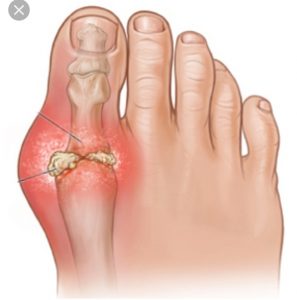
Many steroidal medicines give quick results to calm the symptoms of gout but later on these medicines contribute to several other diseases. You should move the step towards the Ayurveda for better and effective results. There are many herbs and home remedies in the Ayurveda that cures the gout of its root cause and doesn’t occur repeatedly.
We recommended the best home remedies to treat gout naturally with simple home remedies that are easy to use and free from side effects. Try these home remedies that can reduce your pain and ease other symptoms.
1. Ginger Root
Ginger root has anti-inflammatory properties and can be used as one of the many different treatments for gout relief.
How to use
- One way to take ginger root is to just incorporate it into your daily meals when cooking.
- You can add half a teaspoon of ginger root to boiling water and drink the mixture once it has cooled.
- A third option is to create a paste by combining the ginger root with normal water and applying it to the affected area and leaving it on for about 30 minutes.
2. Apple Cider Vinegar
Apple cider vinegar is one of the simple and effective home remedies for relieving pain and swelling. The acidity in the vinegar helps to ease out the symptoms of gout naturally.
How to use – Add a teaspoon of apple cider vinegar to a glass of water and drink it two to three times daily.
3. Lemon Juice
The best way to relieve gout pain and swelling is to reduce the amount of uric acid in the bloodstream. Lemon juice is proven to be the best home remedy as it alkalizes the body and reduces the amount of acid.
How to use
- Mix the juice from one lemon with half a teaspoon of baking soda. Once the fizzing has stopped add it to a glass of water and drink immediately.
- Another option is to add lemon juice to your water and drink around three glasses daily for about one month.
4. Olive Oil
Olive oil contains healthy fats that exert an anti-inflammatory effect on the swollen joints in gout and arthritis. The polyphenols present in olive oil are responsible for this beneficial property. The oil helps to remove the toxins inside the body due to its antioxidant activity.
How to use – Including olive oil in the regular diet is recommended for gout patients. Start using this oil in all your salads and other dishes to reap its benefits.
5. Fenugreek Seeds
The seeds are proven as an effective remedy to ease the symptoms of gout naturally. Consumption of seeds can help to cure gout as it helps in reducing internal as well as external inflammation of the body.
How to use – Soak 1 tablespoon of fenugreek seed in half cup water overnight and drink that water in the morning and chew the soaked seeds. This will help in reducing the swelling of the joints and can relieve pain.
6. Garlic
In the condition of gout, Garlic is proven as a wonderful home remedy as it removes the excess amount of uric acid from the body and helps to manage the symptoms of gout.
How to use – Chew one pod of garlic or you can finely chop the garlic and then consume it. For proper result eat this remedy for about 15-20 days regularly.
7. Celery Seeds
Celery is mainly recommended to cure gout naturally and is proven to the best home remedy. The seeds are rich in Omega-6 fatty acids and other diuretic oils. As a powerful diuretic, it helps in cleaning the system of excess liquids by stimulating the kidneys to flush out the uric acid. It alkalizes your blood which indirectly lowers inflammation in the body.
How to use – You can take half a teaspoon of dried celery seeds once a day but remember to have plenty of water with it.
Use these natural home remedies for managing gout at home.
Diabetes
- August 16, 2019
- Posted by Dr. Vaidya Karanvir Singh
- 0 Comment(s)

The signs & symptoms that are related to diabetes are frequent urination, increased thirst, weight loss, fatigue, irritability, excess hunger, frequent urination, sores are healed slowly, blurred vision, skin infection, vaginal infections, etc. Nowadays children are also getting affected by this common disease. But earlier it is most commonly seen in people with the age of more than 40 years. For controlling blood sugar level people are taking allopathic medicines and insulin injection. It is not a good way because it doesn’t make your body healthy & creates side-effects. Instead of all these medications, you should use home remedies that are easily available at home.
1. Bitter Melon
Bitter melon is one of the best herbs that help in controlling the high blood sugar level naturally. Due to its bitter taste, it helps in maintaining insulin secretion, glucose oxidation, & regenerate the islet cells.
How to use:
- Drink 20 ml of fresh juice of bitter melon once daily.
- Make a powder of bitter melon and store it in a container. Take a teaspoonful of this powder with a glass of water on an empty stomach.
2. Fenugreek
Fenugreek seeds are beneficial for controlling type 2 diabetes naturally. These seeds are rich in fiber, vitamins, minerals, lowers down high blood sugar levels, & causes the absorption of the carbohydrates. The antioxidant nature of this herb removes all toxins out from the body.
How to use:
- Take a teaspoonful of fenugreek seeds in a glass of water soak it overnight. Early in the morning boil this water until remaining half cup. Strain the water & drink this herbal decoction once daily on an empty stomach.
- You can also prepare sprouts of fenugreek seeds & eat it for controlling diabetes naturally.
3. Gurmar
Gurmar contains active components such as gymnemic acid that helps in suppressing the sweetness. The anti-diabetic property of this herb helps in lowering down the high blood sugar levels. This herb is known as “destroyer of sugar”. It stimulates the insulin production in the pancreas & regenerates the insulin-producing islet cells. This herb is considered as the best for treating diabetes at home naturally.
How to use:
- Take a few leaves of Gurmar in two cups of water. Boil it until the remaining half cup. Strain the mixture & drink this herbal tea once or twice daily.
- You can also prepare a powder of this herb from the dried leaves of Gurmar. Store this powder in a container & take a teaspoonful once or twice daily with water.
4. Figs
The figs leaves are beneficial in controlling diabetes naturally. It normalizes the blood fatty acid as well as vitamin E levels. This herb is rich in vitamin A, C, K, B, magnesium, potassium, copper, zinc, manganese, etc.
How to use:
- Take a few leaves of figs in two cups of water. Boil this until remaining half cup. Strain the mixture & drink this once daily.
- You can also store powder of these leaves in a container. Take half teaspoonful twice daily with a glass of water.
5. Garlic
The herb garlic is used for controlling type 1 & type 2 diabetes. It regulates the blood glucose level, fights against infections, deals with the complications related to diabetes. Garlic contains compounds such as allicin, S-allyl cysteine sulfoxide, & allyl proply disulfide that naturally treat diabetes.
How to use:
- Chew a clove of garlic early in the morning on an empty stomach with a glass of water.
- You can also use its paste for cooking purposes in your cuisines.
6. Okra
Okra is commonly known as ladyfinger. This vegetable is rich in dietary fiber, vitamins, & minerals. The antioxidant nature of this herb removes all toxins out from the body.
How to use:
- Take few okra dip in a glass of water. Early in the morning drink this on an empty stomach for reducing high blood sugar levels.
- Eating okra vegetable is good in diabetes.
7. Aloe Vera
Aloe vera herb is best known for its anti-diabetic properties. It reduces the high blood sugar levels in an individual. The regular use of this herb is beneficial in treating type 2 diabetes.
How to use:
- Drink 20ml of freshly prepared aloe vera juice once or twice daily on an empty stomach.
- You can also take Aloe vera as a supplement. Take one capsule of Aloe vera once or twice daily with water.
These all home remedies are easily available at so use anyone for controlling your diabetes naturally.
Bronchitis
- August 16, 2019
- Posted by Dr. Vaidya Karanvir Singh
- 0 Comment(s)

Instead of using certain antibiotics and inhalers you should try the home remedies, which are free from side effects and cure this condition from its root cause. We recommended some of the best home remedies that are easy to use and available.
1. Giloy
Giloy is an Ayurvedic herb that has been used and advocated in Indian medicine for ages. It has a soothing effect on the lining of the throat and thus helps in providing relief to the inflamed bronchial lining.
How to use – Drink 20 ml of the giloy juice twice daily for better results.
2. Sonth
Sonth (dry ginger) has anti-inflammatory properties that provide relief in the case of swollen bronchial tubes. This herb is very useful to get rid of nasal congestion. It is known widely for its anti-inflammation properties.
How to use – You have to mix all the three ingredients (sonth, black pepper, & long pepper) in a powdered form, along with honey and eat the mixture three times in a day for instant results.
3. Ginger and Honey
Ginger is considered as the best home remedy and has a long history of medicinal use for getting relief in cold and flu, inflammation, and immune support. It is very beneficial in curing bronchitis from its root cause.
4. Turmeric
Turmeric exhibits anti-inflammatory and antimicrobial activities and has been used for treating respiratory system-related problems for hundreds of years. It detoxifies the body and also relieves the pain that you may be experiencing in your chest.
How to use – Add a small amount of turmeric to the cow’s milk and mix well. Bring the milk to a boil and let it cool down a little. Drink while it is still warm. Drink this wonderful remedy twice or thrice daily for better results.
5. Onion
Onion is proven as a very effective home remedy as it acts as an expectorant, it helps to dissolve the phlegm and mucus that has accumulated in the bronchial tubes. The onions also prevent further accumulation of mucus, thus providing relief from bronchitis naturally.
How to use – Chop the onions and lightly cook them in some water. Strain the water and place the onions in the center of the towel. Wrap it up to form a poultice. Place this on the chest for 10-12 minutes. Make sure the poultice is not too hot. Apply this remedy twice daily for about 15-20 minutes.
6. Thyme
Apart from being a spice, thyme is also an herb that can be used for treating various problems in the body. It kills the bacteria that is causing the infection and treats bronchitis and its symptoms. It also has antifungal properties.
How to use – Add the thyme to the boiling water and steep for four to five minutes. Strain and drink while the decoction is warm. You can also add a few amounts of honey for flavor. Drink this twice or thrice daily.
7. Bay leaf
Bay leaf is one of the best natural remedies to treat bronchitis. Also called Laurus nobilis, it has multiple nutrients and vitamins that can enhance your health. It has been known to induce the healing wounds, treating bacterial and fungal infections, detoxifying the body, decreasing inflammation, promoting proper digestion, and preventing cancer.
How to use – First, you will need to add two to three-bay leaves in boiling water. Add tea grains and stir well. Strain the tea with the help of a sieve and drink the mixture every day until you’re on the mend.
Use any of the above home remedies for treating bronchitis at home. These all are easily available.
Fresh vegetable home-made soup
- August 16, 2019
- Posted by Dr. Vaidya Karanvir Singh
- 0 Comment(s)
Vegetable soup is a healthy recipe for every individual. As through vegetables, we can get all nutrients including vitamins, minerals, proteins, & carbohydrates. The soup prepared at home is better than outside. For maintaining our health a proper & well-balanced diet is necessary.
Ingredients needed:
1) Chopped one carrot, half cabbage, five french beans, sweet corns, one onion, & two cloves of garlic.
2) Two tablespoons of cornstarch.
3) 1/2 tablespoon of oil or butter.
4) Water.
5) Add half teaspoon of black pepper powder.
6) Salt as per requirement.
7) Two teaspoonful of vinegar.
Method of preparation:
1) Chop all vegetables in small pieces.
2) In a bowl add 2 tablespoons of cornstarch & 3 tablespoons of water, mix them well & put them separately.
3) Now take a stockpot put it over medium flame heat put half tablespoon of oil or butter. Add chopped garlic and onion & saute for 2 minutes.
4) After that add chopped carrots, french beans, sweet corn, cabbage, & salt in it. Cook it for 4 minutes.
5) Now add 3 cups of water in it. When this soup starts boiling add salt in it & black pepper.
6) Now put the cornstarch mixture in this soup. Stir it continuously for preventing the formation of lumps.
7) Stir this mixture until it turns thick for around 8 minutes. After that add vinegar & mix them well.
8) Turn off the flame, put this hot soup into serving bowls, & have this yummy, tasty soup freshly prepared at home.
Ovarian Cyst
- August 16, 2019
- Posted by Dr. Vaidya Karanvir Singh
- 0 Comment(s)
 Ovarian Cyst Treatments at Home
Ovarian Cyst Treatments at Home
Home remedies for Ovarian Cyst : Most of the women develop growths, known as ‘cysts’, in or on their ovaries. These cysts are fluid- (water) filled sacs (rather like a blister). Commonly it is harmless until the cyst is small in size but due to wrong eating habits and sedentary lifestyle if the size of the cyst continuous increases it can lead to various symptoms like pelvic pain, heavy bleeding, unusual vaginal bleeding, breast tenderness, weight gain, lower back pain, etc. Know about how to cure ovarian cyst home remedies, how to get rid of ovarian cyst home remedy, home remedy for ovary cyst, ovarian cyst home treatment, ovarian cyst natural treatment, aloe vera and ovarian cysts, home remedies to remove ovarian cysts.
Various home remedies can help in relieving the discomfort caused by the ovarian cyst. Home remedies are easy to use and safe. We mentioned some of the best home remedies that will help in subsiding all the symptoms and remove the cyst naturally. Few of the home remedies are given below
Top 8 Home Remedies for Ovarian Cyst
1. Beetroot
Beetroot is rich in betacyanin, a compound that boosts the liver’s ability to rid of toxins out from your body. Besides, the alkaline properties of this vegetable, it balances the acidity in your body thereby, reducing the severity of the symptoms of ovarian cysts.
How to use – Mix one cup of fresh beetroot juice with one tablespoon of aloe vera juice. Drink this once daily on an empty stomach.
2. Flaxseed
Flaxseeds are one of the best home remedies that balance the proportion of estrogen and progesterone in your body thereby it reduces the size of cysts. Besides, it flaxseeds are rich in fiber and thus, help the body to eliminate harmful toxins and waste products released by the liver.
How to use – Drink one glass of warm water mixed with one tablespoon of ground flaxseed on an empty stomach daily.
3. Apple Cider Vinegar
Apple cider vinegar can help in contracting and dispersing the ovarian cysts caused by potassium deficiency. It is very beneficial in relieving pain, discomfort, dizziness, weakness, etc.
Can Apple Cider Vinegar Get Rid of Ovarian Cysts?
How to use – Mix one tablespoon of apple cider vinegar in a glass of warm water & drink it on an empty stomach. This drink also helps to reduce excessive menstrual bleeding, bloating and abdominal cramps during periods. Drink two glasses daily for better results.
4. Ginger
Ginger is a very effective remedy in controlling the symptoms of ovarian cyst. It is an anti-inflammatory herb that relieves pain, increases heat in the body and induces a healthy flow during menstruation.
How to use – Blend a few pieces of ginger, two stalks of celery, half a glass of apple juice, and few slices of a pineapple in a juicer. Drink this once daily until the cysts are gone.
5. Almonds
Almonds is loaded with magnesium which helps in regularizing your menstruation cycle and also reduces abdominal cramps. It is very beneficial to enhance your immune system naturally and provide you strength and stamina.
How to use
- a) Eat 5-7 soaked almonds daily.
- For effective results, you can mix a few drops of jasmine oil to a teaspoon of almond oil and then massage with it.
- Also, you can consider adding a teaspoon of sweet almond oil to a glass of warm milk and take it daily for a quick recovery.
6. Red Raspberry
Leaves of red raspberry are a very effective remedy and beneficial for women suffering from the heavy menstrual flow. Tannins in this help to strengthen the uterine muscles & also reduces abdominal pain.
How to use – Add 1 tablespoon of dried red raspberry leaves to a cup of hot water, cover for 10 min and then strain, have this tea three times a day during your periods.
7. Mustard Seeds
Mustard seeds are one of the best and effective home remedy for controlling the symptoms of ovarian cyst. It also cures the heavy bleeding during menstruation and provides strength to the uterine muscles.
How to use – Take 40 grams of dried mustard seeds and grind to a fine powder. Use 2-3 grams of each of the powder with lukewarm milk twice daily before or during the menstrual cycle to arrest excessive bleeding.
8. Castor Oil
Castor oil is a certain type of vegetable oil derived from castor seeds. This oil is used for several health and medicinal purposes.
How to use – If you are having abdominal pain due to the presence of ovarian cysts, what you need to do to relieve the pain is to apply the castor oil over your abdomen. Then, place a clean flannel or towel over that abdominal area and place a heating pad on top of it for 15-20 minutes. Wash it with normal water.
The above-mentioned home remedies are proven to be the best and very effective to treat the condition of ovarian cyst naturally. As these are safe and easy to use, it can be used at any age to get rid of the ovarian cysts.
How to Get Rid of Ovarian Cyst Home Remedy
Ovarian cysts are known to cause a slew of problems for both men and women. They can be painful, cause bloating, back pain and more. In our opinion, the best way to get rid of ovarian cyst symptoms is to see a doctor or nurse practitioner. However, there are home remedies that you can use too. Two of them include apple cider vinegar and tea tree oil.
Tags : how to cure ovarian cyst home remedies, how to get rid of ovarian cyst home remedy, home remedy for ovary cyst, ovarian cyst home treatment, ovarian cyst natural treatment, aloe vera and ovarian cysts, home remedies to remove ovarian cysts


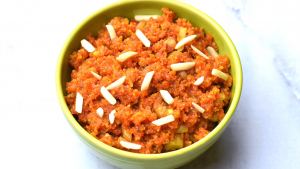
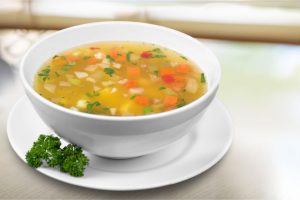
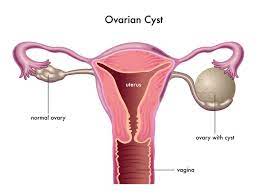
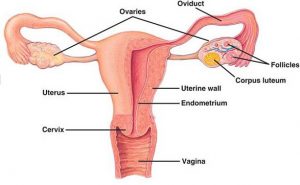 Ovarian Cyst Treatments at Home
Ovarian Cyst Treatments at Home